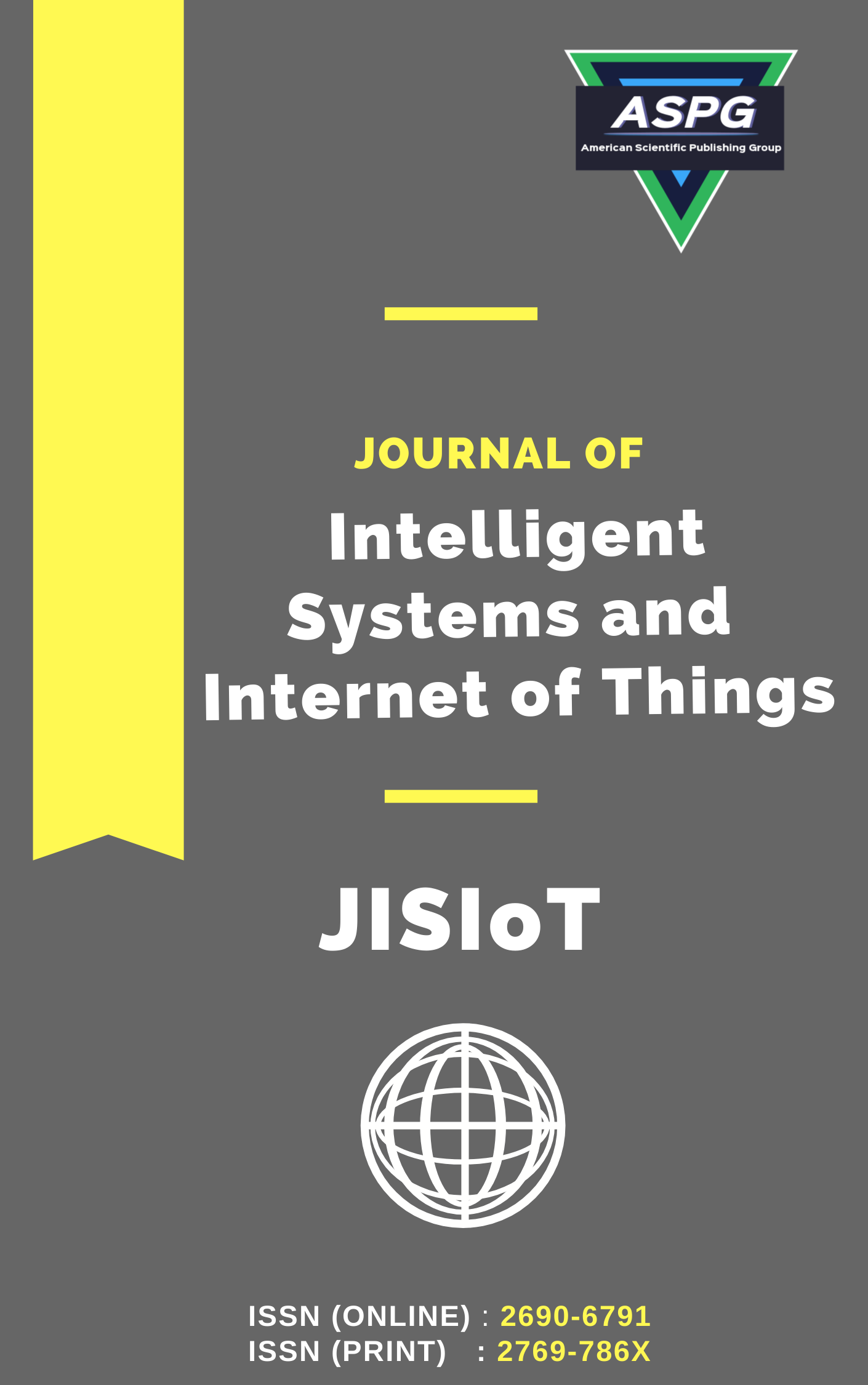

Volume 18 , Issue 1 , PP: 309-325, 2026 | Cite this article as | XML | Html | PDF | Full Length Article
Marri Madhavi 1 * , Sudha Vemaraju 2
Doi: https://doi.org/10.54216/JISIoT.180124
This study investigates the impact of Digital Transformation (DT), Artificial Intelligence (AI), Internet of Things (IoT), Employee Collaboration (EC), and Communication on Organizational Citizenship Behavior (OCB) across different work models—Hybrid, Remote, and In-Office. A structured questionnaire was developed and administered to employees in the IT industry in Hyderabad to collect data. The major findings indicate that Digital Transformation, AI, IoT, and Employee Collaboration significantly enhance OCB across various work models. Conversely, Communication alone does not significantly affect OCB within different work settings. The integration of advanced digital tools, AI, IoT, and collaborative technologies is crucial for fostering positive employee behaviors, which are less achievable through communication alone. The study underscores the importance of leveraging digital transformation, AI, and IoT to optimize organizational outcomes, particularly when implementing diverse work models.
Digital Transformation , Artificial Intelligence (AI) , Internet of Things (IoT) , Employee Collaboration , Organizational Citizenship Behavior (OCB)
[1] N. Mohammad, S. Muhammad, A. Bashar, and M. A. Khan, “Formal analysis of human-assisted smart city emergency services,” IEEE Access, vol. 7, pp. 60376–60388, 2019.
[2] J. Hohenstein et al., “Artificial intelligence in communication impacts language and social relationships,” Scientific Reports, vol. 13, no. 1, 2023.
[3] E. Eisner, N. Berry, and S. Bucci, “Digital tools to support mental health: a survey study in psychosis,” BMC Psychiatry, vol. 23, no. 1, 2023.
[4] D. Yang, B. Qu, and P. Cudre-Mauroux, “Location-centric social media analytics: Challenges and opportunities for smart cities,” IEEE Intell. Syst., vol. 36, no. 5, pp. 3–10, Sep. 2021.
[5] K. Koch, “The Territorial and Socio-Economic Characteristics of the Digital Divide in Canada,” Canadian Journal of Regional Science, vol. 45, no. 2, pp. 89-98, 2022.
[6] M. M. Rahman, M. S. Islam, and M. A. Hossain, “A comprehensive review on smart city technologies and applications,” Journal of Urban Technology, vol. 30, no. 3, pp. 1-25, 2023.
[7] J. Breakstone et al., “Civic Preparation for the Digital Age: How College Students Evaluate Online Sources About Social and Political Issues,” Journal of Higher Education, vol. 93, no. 7, pp. 963-988, 2022.
[8] A. S. Ibrahim, K. Y. Youssef, H. Kamel, and M. Abouelatta, “Traffic modelling of smart city Internet of Things architecture,” IET Commun., vol. 14, no. 8, pp. 1275–1284, 2020.
[9] K. Siripongdee, P. Pimdee, and S. Tuntiwongwanich, “A blended learning model with IoT-based technology: effectively used when the COVID-19 pandemic,” Journal for the Education of Gifted, pp. 1-14, 2020.
[10] H. Mroue et al., “A novel framework for smart city energy management based on IoT and AI,” Sensors, vol. 22, no. 5, pp. 1-17, 2022.
[11] M. A. Rahman, M. M. Rashid, M. S. Hossain, E. Hassanain, M. F. Alhamid, and M. Guizani, “Blockchain and IoT-based cognitive edge framework for sharing economy services in a smart city,” IEEE Access, vol. 7, pp. 18611–18621, 2019.
[12] W. J. C. and G. J. Willsie Kathrine, “Intelligent System with the IoT: A survey on techniques of Artificial Intelligence over the field of Internet of Things,” 8th International Conference on Advanced Computing and Communication Systems (ICACCS), pp. 347-351, 2022.
[13] R. Agarwal et al., “Effect of increased screen time on eyes during COVID-19 pandemic,” Journal of Family Medicine and Primary Care, vol. 11, no. 7, p. 3642, 2022.
[14] F. M. Pires, L. D. S. Mendes, and L. L. Quiñonez, “Integrated system architecture for decision-making and urban planning in smart cities,” Int. J. Distrib. Sensor Netw., vol. 15, no. 8, Aug. 2019, Art. no. 155014771986782.
[15] M. Humayun et al., “Securing the Internet of Things in Artificial Intelligence Era: A Comprehensive Survey,” IEEE Access, pp. 25469-25490, 2024.
[16] V. Roy et al., “Detection of sleep apnea through heart rate signal using Convolutional Neural Network,” International Journal of Pharmaceutical Research, vol. 12, no. 4, Oct-Dec 2020, pp. 4829-4836.
[17] A. Kankanhalli, Y. Charalabidis, and S. Mellouli, “IoT and AI for Smart Government,” Elsevier, 2019.
[18] T. Malche et al., “Environmental monitoring system for smart city based on secure Internet of Things (IoT) architecture,” Wirel. Pers. Commun., vol. 107, pp. 2143–2172, 2019.
[19] A. Ghosh, A. Maeder, M. Baker, and D. Chandramouli, “5G evolution: A view on 5G cellular technology beyond 3GPP release 15,” IEEE Access, vol. 7, pp. 127639–127651, 2019.
[20] Regona, Massimo, T. Yigitcanlar, B. Xia, and R. Yi Man Li, “Opportunities and Adoption Challenges of AI in the Construction Industry: A PRISMA Review,” Journal of Open Innovation: Technology, Market, and Complexity, vol. 8, no. 1, 2022.
[21] V. Rocha and A. F. Brandão, “A scalable multiagent architecture for monitoring IoT devices,” J. Netw. Comput. Appl., vol. 139, pp. 1–14, 2019.
[22] S. S. Shah et al., “VFog: A vehicle-assisted computing framework for delay-sensitive applications in smart cities,” IEEE Access, vol. 7, pp. 34900–34909, 2019.
[23] M. S. Mahdavinejad et al., “Machine learning for internet of things data analysis: a survey,” Digital Communications and Networks, vol. 4, no. 3, pp. 1-15, 2018.
[24] V. Roy et al., “Application of Theory of Nonlinear Dynamics to Study Automated Detection of Epileptic EEG Signals,” accepted in International Conference on Machine Intelligence and Smart Systems (MISS2023).
[25] B. S. Balaji et al., “Enhancement of security and handling the inconspicuousness in IoT using a simple size extensible blockchain,” Energies, vol. 13, no. 7, p. 1795, Apr. 2020.
[26] M. Masood and N. A. M. Mokmin, “Case-based Reasoning Intelligent Tutoring System: An Application of Big Data and IoT,” ICBDR 2017: Proceedings of the 2017 International Conference on Big Data Research, pp. 28-32, 2017.
[27] S. H. Liao and L. L. Yang, “Mobile payment and online to offline retail business models,” J. Retail. Consum. Serv., vol. 57, p. 102230, 2020.
[28] R. S. Kumar et al., “Data-driven approaches for smart city traffic management: A review,” Journal of Urban Technology, vol. 29, no. 2, pp. 1-20, 2024.